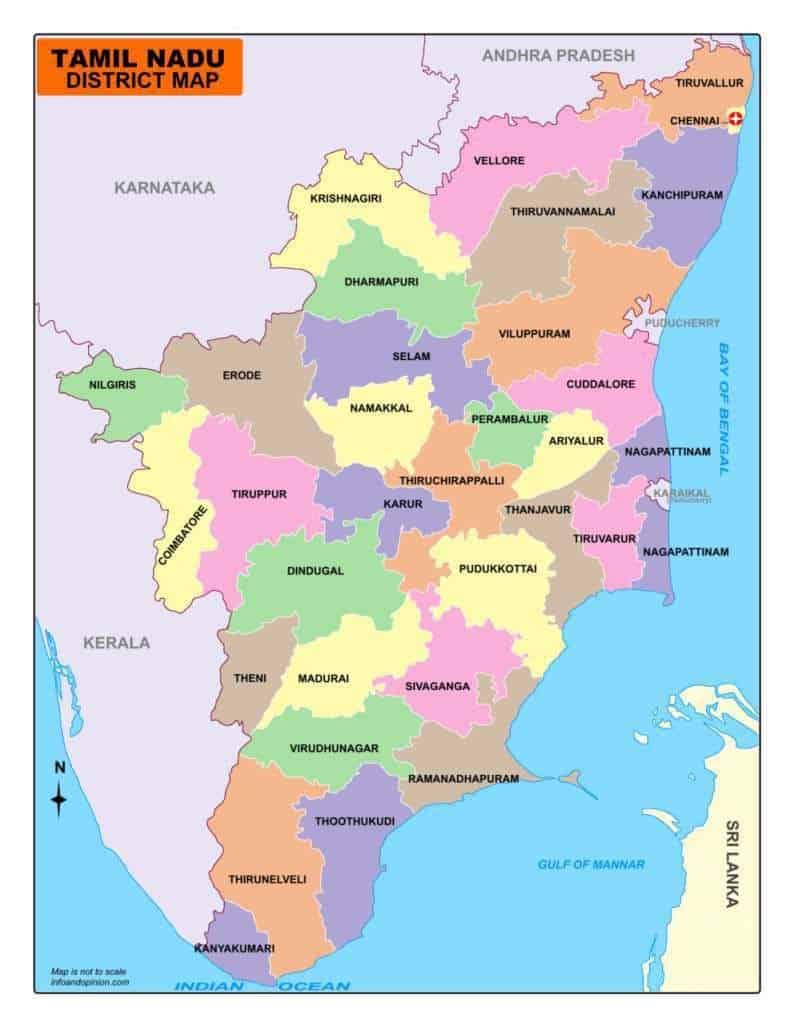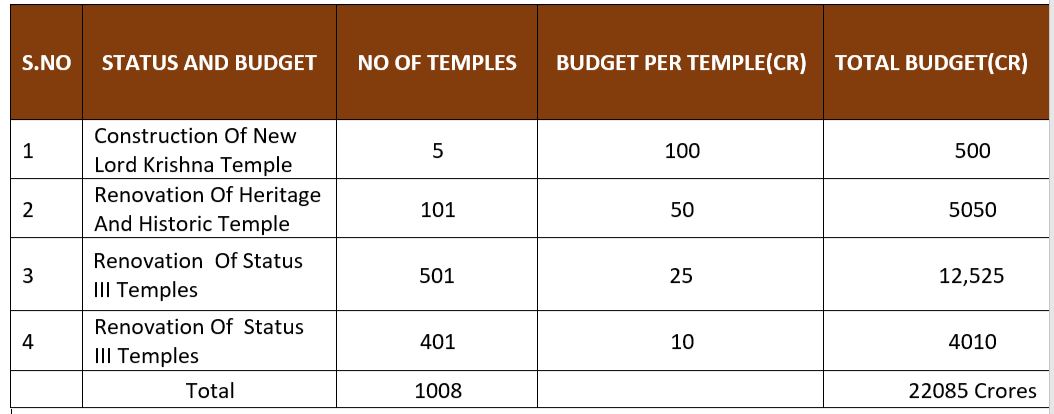RENOVATION, RECONSTRUCTION AND MAINTANENCE OF OLD TEMPLES IN THE STATE OF TAMILNADU UNDER “THE GREEN TEMPLE PROJECT”
Our TAMIL NADU known as the Land of Temples. Nearly 33,000 ancient temples, many at least 800 to 5000 years old, are found scattered all over the state. As per Tamil Nadu Hindu Endowments Board, there are nearly 38615 temples. Most of the largest Hindu temples reside here. Studded with complex architecture, variety of sculptures, and rich inscriptions, the temples remain the very essence of the culture and heritage of Tamil land, with historical records dating back to at least 3,000 years.
There are several hundreds of ancient temples in remote and interior villages too are in dire need for renovation. Restoring many of these forgotten temples and breathing new life into them. Restoration of temples has been the focal point of our WRC TRUST.
Renovation, preservations and maintenance of old temples in the State of TAMILNADU Temples with heritage and historic values will be given top priority.
We would ensure that all such old temples, which are in a dilapidated condition, are renovated across the state with people’s cooperation.
STAKE HOLDERS
The RENOVATION project has been developed keeping in mind all the stake holders at all the levels, the project with such idea and magnitude is beneficial and ideal for all the sectors of our community.
Government: Keeping in mind the mission – peace for the entire community by 2025 the project would definitely serve as a cornerstone for the fulfilment of requirement and duty of the government to promote greater awareness, better understanding, mutual respect, unity, harmony and co-operation amongst peoples of diverse, ethnic, racial, spiritual, cultural and religious backgrounds
People: The benefit of the model will be immense to the people in the surrounding and also to the people all over due to the unique idea and concept and availability of all the holyspirit, medical, education under one umbrella.
Patrons and Donors: All the large-hearted donors and patrons associated with this project shall feel honoured and blessed for having made the entire idea and concept of such
Why Temple RENOVATION / THIRUPPANI is Important?
Sanatana Dharma temples reflects synthesis of tradition, arts, the ideals of Sanatana Dharma, beliefs, values, and the way of life cherished under Hinduism. It is a link between man, deities, and the Paramathma (God) in a sacred space.
Sanatana Dharma temple architecture is an open, symmetry driven structure, with many variations, deploying perfect geometric shapes such as circles and squares. A Hindu temple consists of an inner sanctum, the garbha griha or womb-chamber, where the primary deity is housed along with Purusa (eternal Paramathma). The garbhagriha is crowned by a towerlike Shikhara, also called the Vimana. The architecture includes an ambulatory for parikrama (circumbulation), a congregation hall, and sometimes an antechamber and porch.
Ancient South Indian Hindu temples have a large gopuram, a monumental tower, usually ornate, at the entrance of the temple. This forms a prominent feature of ancient South Indian Hindu temples. They are topped by the kalasam, a bulbous stone finial. They function as gateways through the walls that surround the temple complex. The gopuram’s origins can be traced back to early structures of the Tamil kings Pallavas; and by the twelfth century, under the Pandya rulers, these gateways became a dominant feature of a temple’s outer appearance, eventually overshadowing the inner sanctuary which became obscured from view by the gopuram’s colossal size.
It also dominated the inner sanctum in amount of ornamentation. Often a shrine has more than one gopuram. They also appear in architecture outside India, especially Khmer architecture, as at Angkor Wat. A temple may have multiple gopurams, typically constructed into multiple walls in tiers around the main shrine. The temple’s walls are typically square with the outer most walls having gopuras. The sanctum and its towering roof (the central deity’s shrine) are also called the Vimanam.
In ancient Indian texts, a temple is a place for Tirtha – pilgrimage. It is a sacred site whose ambiance and design attempts to symbolically condense the ideal tenets of Hindu way of life. All the cosmic elements that create and celebrate life in Hindu pantheon, are present in a Hindu temple – from fire to water, from images of nature to deities, from the feminine to the masculine, from kama to artha, from the fleeting sounds to incense smells is part of a Hindu temple architecture.
The architectural principles of Hindu temples in India are described in Shilpa Shastras and Vastu Sastras. The Hindu culture has encouraged aesthetic independence to its temple builders, and its architects have sometimes exercised considerable flexibility in creative expression by adopting other perfect geometries and mathematical principles in temple construction to express the Hindu way of life.
LORD KRISHNA TEMPLE
A physical green temple helps one internalise the purity, peace, and presence of God all around. God is Omni present, in describing a temple, “A temple is a place where one can offer his prayers and get god’s blessings.”
Every soul is born in the form according to its Karma. We can get rid of the effects of these Karma and reach the feet of the Lord only by surrendering and worshiping him, and temple is a place where god has established himself with graceful forms.
Worship of the Lord purifies the heart, generates harmonious vibrations, steadies the mind, purifies and ennobles the emotions, harmonises the five sheaths, and eventually leads to communion, fellowship or God-realisation
GUIDELINES:
WORSHIP – where a consistent pattern of devotional rituals, ceremonies and practices is observed throughout the day, every day.
LEARNING – where young and old can engage with and learn about Hindu beliefs, values and practices to kindle a spiritually uplifting and fulfilling lifestyle
CELEBRATION – where year-round Hindu festivals allow for vibrant and joyous celebrations for the whole community
BEAUTY – where exquisite art and architecture are offered as a humble tribute to the inexpressible majesty and unbounded glory of the Divine
COMMUNITY – where dialogue and understanding help foster greater respect, harmony and cooperation among people of different faiths, races, ethnicities and cultures
CHARITY – where the selfless spirit of volunteerism reaches out to serve the wider community and contribute meaningfully to our country
PEACE
The vital role this temple can play in meeting the environmental challenges facing India today. For millions of people these places are the gateway to spiritual practice, providing guidance on how they can live moral lives in keeping with their religious beliefs.
When temples and their communities exhibit a deep care for the planet Earth and the natural world that sustains us; pilgrims and other visitors are able to share in this ethos.
LORD KRISHNA TEMPLE
- HISTORY OF TEMPLE
- ART and ARCHETECHTURE
- VISION AND MISSION OF GREEN TEMPLE
- EGO FRIENDLY FEATURES
- DETAILS OF MAIN TEMPLE
- PRAYER HALL
- BRINDHAVANAM ANNASEKTHRAM
- GAUSHALA
- YOGA & MEDITATION CENTRE
- HERBAL GARDEN
- VEDAPATASALA
- YAGASALA
- GOKULAM FOR CHILDREN
- AYURVED CLINIC
- SOLAR POWERED GREEN ENERGY
- DEVOTEES DWELLING HOUSE
- THEERTHAKUNDAM
- HINDU CULTURE LEARNING CENTRE
- ECO FRIENDLY WASTE MANAGEMENT SYSTEM
- TOILETS & BATH ROOM
GREEN TEMPLE INITIATIVE to create a vision and action plan that will enable our temple to manage:
- Green pujas, worship & celebrations
- Awareness and education
- Greening the temple landscape
- Improving energy efficiency Conserving water resources
- Waste management
- Protecting animals and wild places
- Faith & food
It is decided to follow the Green Temples Initiatives:
- We create a network of sustainable and earth friendly temples in all our proposed FIVE MODEL BRINDAVAN GAUSHALA locations.
- We will join existing networks of international “green” places of worship
- Encourage the sharing of best practice between temple sites in India, and with those around the world
- Create a theological basis for environmental action
- We will work closely with government agencies, also Encourage NGOs and private companies to make their holy places more environmentally friendly
- We create practical action plans for promoting sustainability and care for the Earth
- We will Share stories, wisdom and traditions to all
- Ask pilgrims and visitors to walk lightly and travel responsibly in the spirit of their religion.
By taking part in this initiative, Our temple will join hundreds of others across India in a national network, linked to an international network of places of worship that are aligning their practices with the beliefs and values of their spiritual traditions.
AIMS AND OBJECTIVES:
- Construction of The Green Temple of LORD KRISHNA TEMPLE in all our trust proposed FIVE MODEL BRINDHAVAN GAUSALA locations with the budget of INR.100Crore per location with all infrastructures like Main Temple, Brindavanam, Prayer Hall, Meditation Centre, Gaushala, Vedapatasala, Culture learning Centre, Dwelling House, Ayurveda Clinic, Herbal Garden, Annasekthra, Theerthakundam, Clear drinking water facilities and Toilets and bath rooms.
- The primary aim of the Hindu-Temple is to meet the spiritual, ritual, ceremonial and social needs of Hindus. It is recognised that Hindus over the state TN, meditate, worship or pray according to their personal beliefs and traditions. These diversities inherent part of our heritage, and must be suitably reflected in the functioning of the temple.
- Renovate Reconstruct and Maintenance of 101 heritage and historical based temples in the state of TAMILNADU with the budget of Rs.50Cr per temple to establish and meet the Eco friendly GREEN TEMPLE guidelines.
- Every renovated temple will have established GAUSHALA with 33 COWS for the benefit of devotees to perform GAUPOOJA, GAUDHANAM and GAUFEED.
- VEDAPATASALA will be established to provide Vedic education to students in a serene environment for the purpose of carrying on a scientific study and analysis of the Veda Sasthras.
- To promote a better understanding and appreciation of the principles, philosophy, practices and teachings of the Hindu faith, spiritual and religious beliefs and Hinduism as a religion in general CULTURE LEARNING PROGRAMS will be conducted.
- ANNASEKTHRA will be constructed to provide free meal for about 500 people every day.
- DWELLING KUDIL – Lot of pilgrims come from all across the country daily. Some of them belong to poor section of the society who can’t afford for lodging on their own. Keeping this in view dwelling house will be constructed with capacity of 100 people accommodation.
- AYURVED CLINIC will be established to build a disease free community by making every individual physically strong, emotionally balanced, socially responsible and spiritually awakened.
- YAGASALA will be constructed in every renovated temple areas to perform Yajna for the elimination of environmental pollution.
- BRINDAVANAM will be developed with herbal plants, aromatic plants and various flower plants will be collected and planted to keep the temple environment Green.
As a Green temple concept all renovated temples will be powered by SOLAR POWER SYSTEMS. - JALSHAKTHI – Establish enough water resources to provide 24/7 non-stop clean and clear drinking water and the water for other purposes of temple.
- Collection and preservation of Indian Archaeology and ancient heritage, construction of archaeology museums / library, etc. organization of exhibition and all that work which is necessary for the security of culture.
- Renovate reconstruct and maintain 501 temples will be identified and inspected in various places in Tamil Nadu the same will be established with all planned infrastructures and facilities at the budget of INR25Crore per temple.
- Renovate reconstruct and Maintain 401 temples will be identified and inspected in various villages in Tamil Nadu the same will be established with required planned infrastructures and facilities at the budget of INR 10Crore per temple.
- The Hindu-Temple is committed to provide facilities for Hindus from all walks of life and shall focus its services in Sanatan Dharma.
- To promote understanding of Hindu religion among Hindus and local society – conduct workshops on Hindu religion, maintain library of religious books, conduct or participate in activities that promote this objective, participate in Inter-faith services.
- To advance and promote educational, religious and cultural activities like BHARATHANATIUM the classical dance in the community for the well-being of the people of diverse and different spiritual, religious beliefs and cultural backgrounds.
- To print, publish, sell, distribute, scriptures, booklets, publications, newspapers, materials which promote, foster, advance and enhance the knowledge, understanding of the principles, philosophy, practices and teaching of the Hindu faith, spiritual and religious
DETAILS FOR BUDGET
THE GREEN TEMPLE PROJECT












Comments are closed.